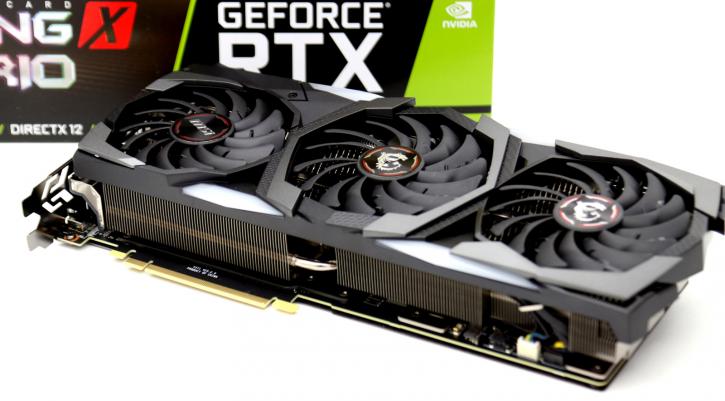Introduction
MSI GeForce RTX 2080 Ti Gaming X TRIO reviewThe beast unleashed ..
Oh yes, you figured we only had founders reviews to show, au contraire my fellow guru, in this review, we'll peek at the Mc Daddy of them all, you know the quarter pounder, the royale with cheese or 'le big mac'. Yes, at launch week MSI is already offering their MSI GeForce RTX 2080 Ti Gaming X TRIO. A card with terrific looks, super sweet cooling, and low noise levels. Oh heck, and its factory tweaked pretty sweet as well.
We've already covered a lot of new technology as the Turing architecture of the new GPUs offers a fundament change in the graphics card arena as next to your normal shading engine, NVIDIA has added RT (Raytracing) cores, as well as Tensor (AI), cores onto the new GPUs, and these are active. Is Turing is the start of the next 20 years of gaming graphics? Well, that all depends on the actual adoption rate in the software houses, they guys and girls that develop games and a dozen or so RTX games are in development and a dozen or so announced titles will make use of deep learning DLSS running utilizing the Tensor cores. For the new RTX series, it's mostly about Raytracing though. So welcome to a long row of RTX reviews. We start off with the reference cards and will follow with the AIB cards as for whatever reason NVIDIA figured it to be an okay thing for them to launch everything at once. First a quick recap of what's tested in this article, a bit of architecture and then we'll dive into real-world testing of course. You better grab a drink as these reference articles are prone to be lengthy with all the information we are covering.
The GeForce RTX 2080 Ti - this is the new consumer flagship graphics card from NVIDIA is the GeForce RTX 2080 Ti, this product series has been fitted with the TU102 GPU. This GPU will have 4352 active shader processors, which is substantial when compared with the GeForce GTX 1080 Ti. The product will get 11GB GDDR6 graphics memory, and with that 11 GB, you will get a 352-bit wide memory bus. The GPU has six Graphics Processing Clusters (GPCs), 36 Texture Processing Clusters (TPCs), and 72 Streaming Multiprocessors (SMs). Each SM contains 64 CUDA Cores, eight Tensor Cores, four texture units, and 96 KB of L1/shared memory which can be configured for various capacities depending on the compute or graphics workloads. Ray tracing acceleration is performed by a new RT Core processing, the TU102 has 72 of them with 576 tensor cores and 96 ROP units. For clock frequencies, we're looking at a 1350 MHz base frequency, with Turbo allowance towards 1635 MHz. Keep some margin in mind for the board partner clock frequencies. The AIB products should start at 999 USD, the founders' edition will start at 1199 USD.
For this review we will look into the MSI GeForce RTX 2080 Ti Gaming X TRIO, which kind of has replaced the Lightning models I think? This graphics card comes customized with higher-factory clocks (1755 MHz Boost), a triple fan solution as well as a very nice RGB setup. RTX 2080 Ti or not, this card passive up-to roughly 60 Degrees C and has a lot of hidden gems. Neither did it any warmer than 73 Degrees C either. The Gaming X Trio comes with updated looks, it's styled a bit after the Lightning in RGB design elements with a combination that hints towards the Twinfrozr looks. The new cooler is thicker and heavier at 2.7 PCIe slots, but that's definitely worth it as you'll see in our acoustic measurements. The card comes with two 8-pin power headers as well as another 6-pin header, included is a back-plate but also a mounting strut to stabilize the card which MSI previously called "LAN Party Guard", so if you move around the card it'll be secure and tight preventing a sagging card due to movement (as it is heavy). The card offers one HDMI ports and three DisplayPort outputs and the new Virtual link (USB) connector. This Turing 102 GPU empowered product keeps that GPU at 73 Degrees C marker depending on game load. The card at defaults clocks in at a base clock frequency of 1350 MHz but has a Boost frequency of 1755 MHz. The GDDR6 memory has been not been tweaked, the new Micron ICs are a stock 14 GHz (effective clock-rate). The card is designed in all black with some colored elements.
Have a peek and then lets dive deep into this review.


